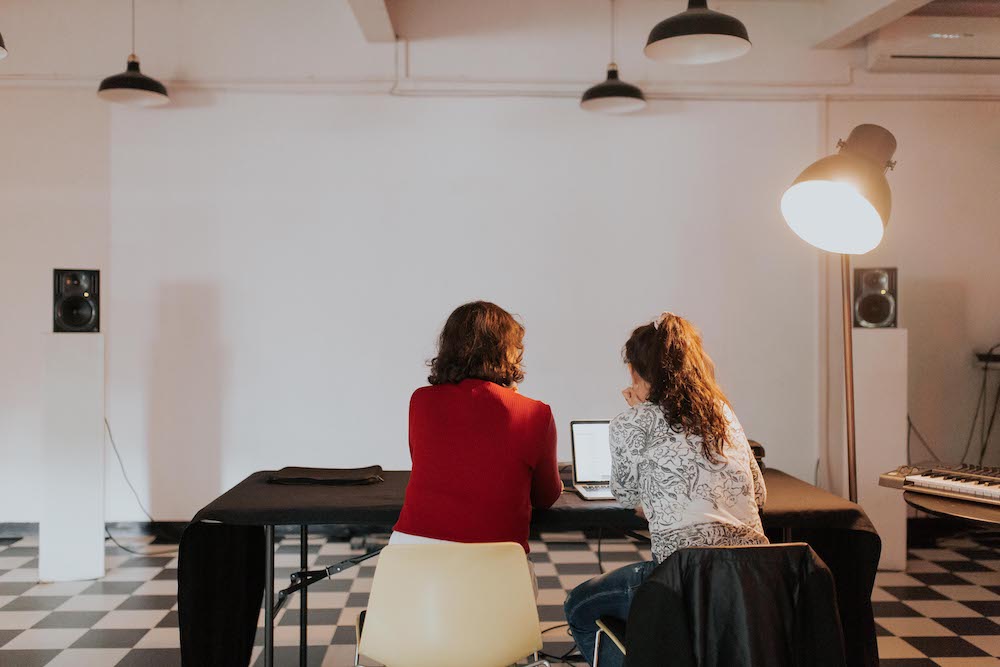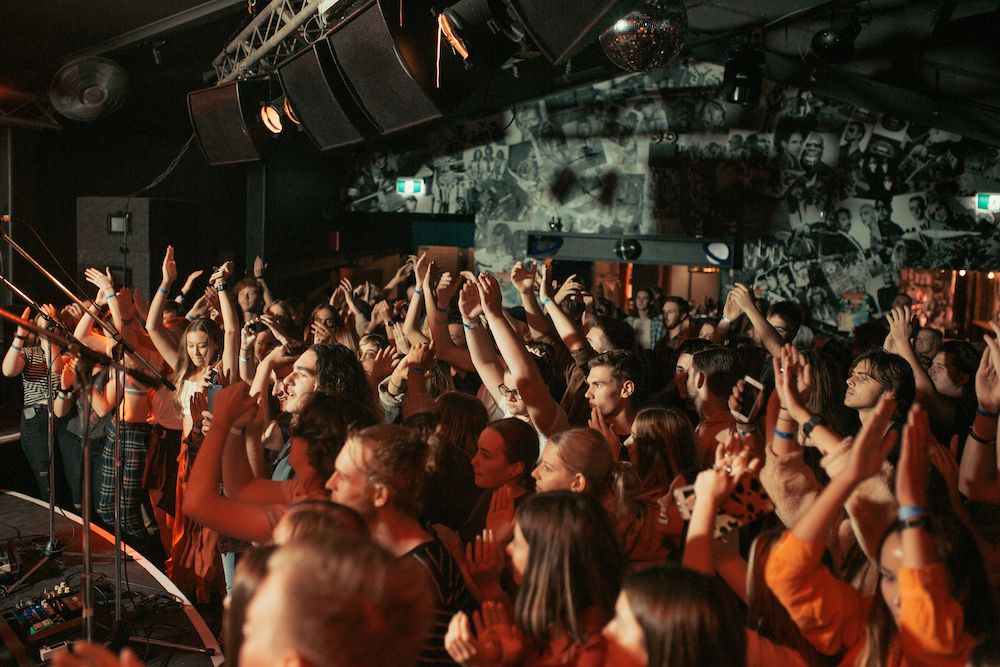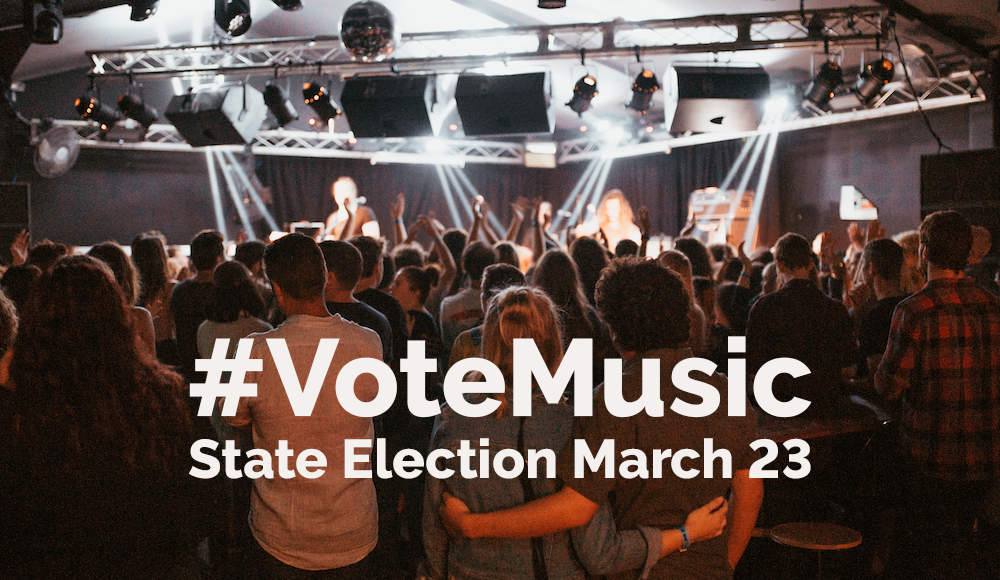Confused about preferences? Don't know your Legislative Council from your Legislative Assembly? Make your vote count on March 23 by:
- Understanding where each party stands on music-related issues
- Preferencing every box to make sure you get the most out of your vote!
HOW ELECTIONS WORK IN NSW
There are two houses of parliament in NSW – the Legislative Council (Upper House) and Legislative Assembly (Lower House). The party with a majority of seats in the Lower House is the party that forms government. State Elections happen every four years. Everyone over 18 must vote.
Election Day: March 23, 2019
When you go to your local polling booth on March 23 you will be given two pieces of paper – a big one and a smaller one. The big one is the ballot paper for the Upper House. The small one is the ballot paper for the Lower House. You MUST complete both by numbering the boxes in order of your preference.
Legislative council
The upper house
As the "house of review", the purpose of the Legislative Council is to consider legislation that's been passed by the Legislative Assembly.
Legislative assembly
The lower house
Most legislation is initiated in the Legislative Assembly. This is also where the Government is formed, by the party or coalition with a majority of seats.
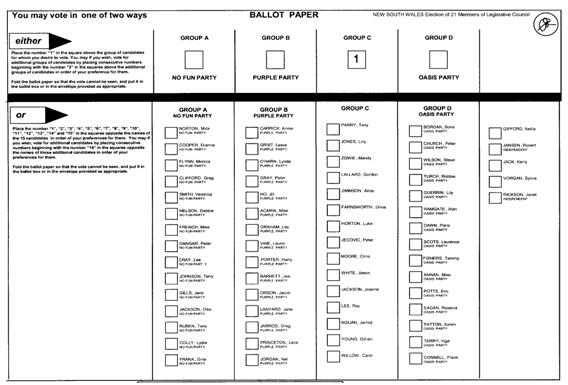
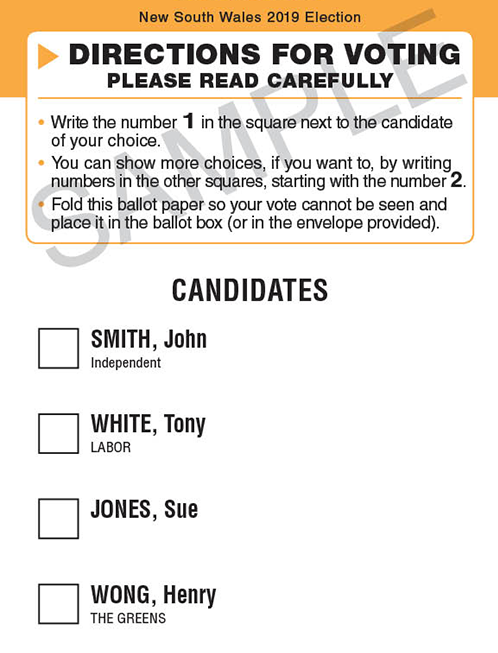
How do I vote for the Legislative Assembly (lower house)?
Each electoral district has a unique ballot paper, and you can only vote for the candidates running in your electoral district.
To vote, you must put a number 1 in the square next to the candidate you want to elect.
You can number as many more candidates as you like after the first one.
Why should I number all the candidates?
While you don’t have to, we strongly recommend filling in ALL of the boxes, in order of preference.
The reason behind this is if your first preference doesn’t get enough votes, then your vote stops there. BUT if you list who you’d prefer if your first choice doesn’t get in, then you still get to have a say.
So for example, when you vote 1 for Party A, 2 for Party B and 3 for Party C, if Party A doesn’t get enough votes, then Party B and Party C still have a chance. It’s just about making your vote go all the way!
Explained: Preferential voting in the lower house
To be elected into the Legislative Assembly, a candidate has to receive 50%+1 of the votes. This is called an ‘absolute majority’.
If no one has the absolute majority, the candidate with the least number of votes is ‘excluded’, and their votes are re-sorted according to the second preferences on the ballot papers.
However, if any of those ballot papers do not have a second preference, those ballot papers are removed from the count.
The absolute majority is recalculated after every candidate is excluded.
The ballot papers of excluded candidates are re-sorted to the second, third, fourth etc. preferences until a candidate has an absolute majority of the votes and is elected.
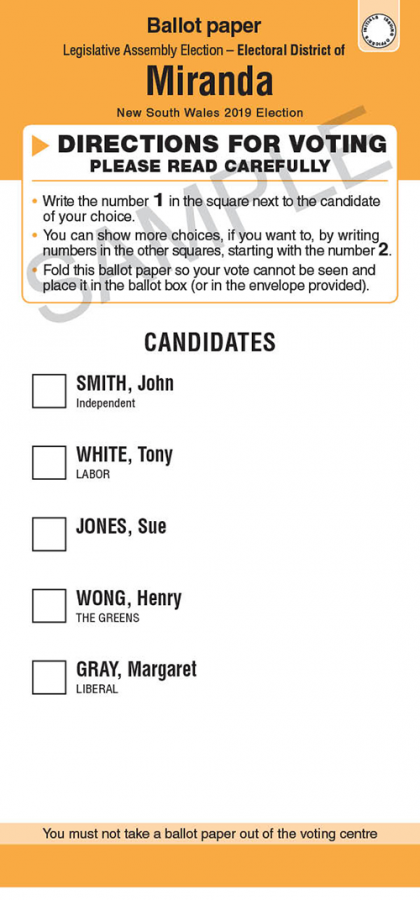
Sample ballot paper for the Legislative Assembly
And the Legislative Council (upper house)?
For the Legislative Council, you must choose between voting 'above the line' or 'below the line'.
The names of each candidate are shown on the ballot paper, alongside the name of their party if applicable.
A 'candidate group' is a group of least two candidates who are listed collectively on a ballot paper, like political parties. Candidate groups are listed above the line.
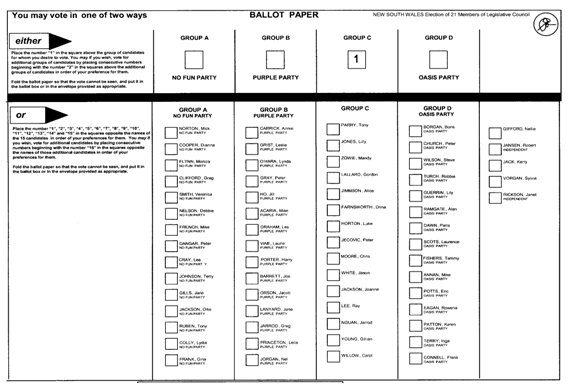
Sample ballot paper for the Legislative Council
Above the line voting
1. You must put a number 1 in one of the group voting squares. By doing this you are voting for that whole group of candidates in the order they are listed below that square.
2. If you want to, you can number more choices above the line.
Below the line voting
All individual candidates are listed below the line, including any candidates who aren't in groups.
1. You must number at least 15 candidates for your vote to be counted.
2. If you want to, you can number more choices below the line.
WHAT ABOUT PREFERENCE DEALS? Is my vote going to go somewhere else?
Unlike some other states, candidates and parties in NSW cannot give your vote to someone else.
That's why it's all the more important to list your preferences when voting in both the Upper and Lower House.
So, what is a preference deal then?
In NSW, preference deals refer to parties giving you recommendations on a How To Vote card when you arrive at your local polling booth. It's up to you whether or not you want to follow a party's recommendations.
So who should I vote for?
While MusicNSW won't tell you who to vote for, we do have a resource available for you to compare party policies on music.
Check out our 2019 State Election Report Card and make an informed vote on March 23rd!
Authorised by
E. Collins
Music NSW Incorporated
62 Glebe Pt. Road
Glebe NSW 2037
